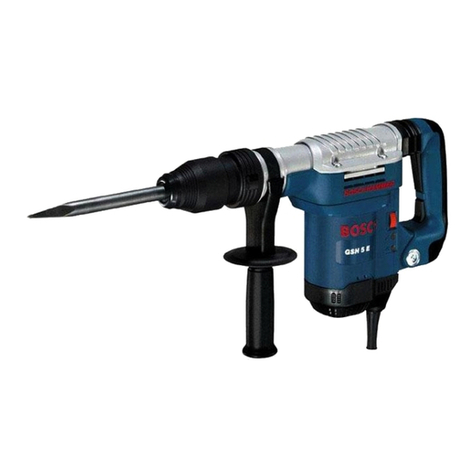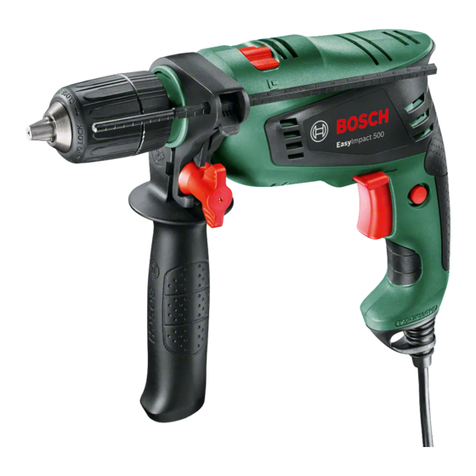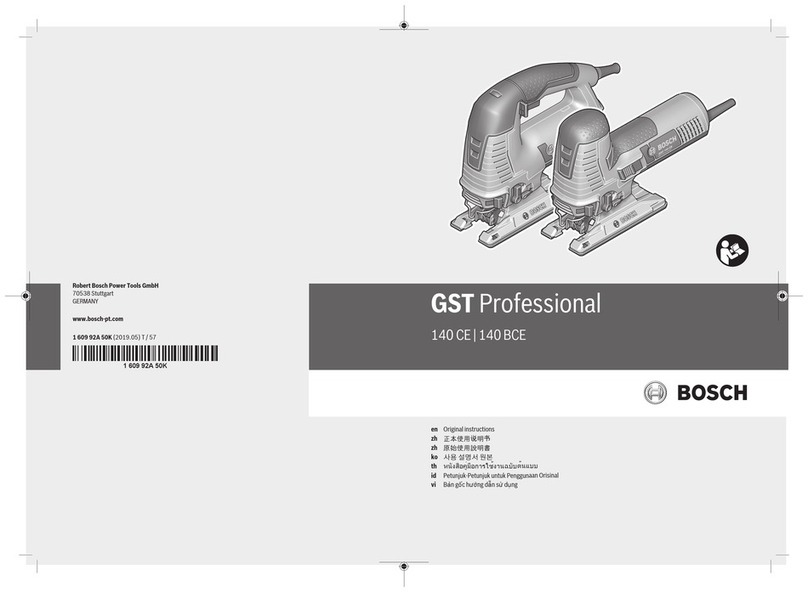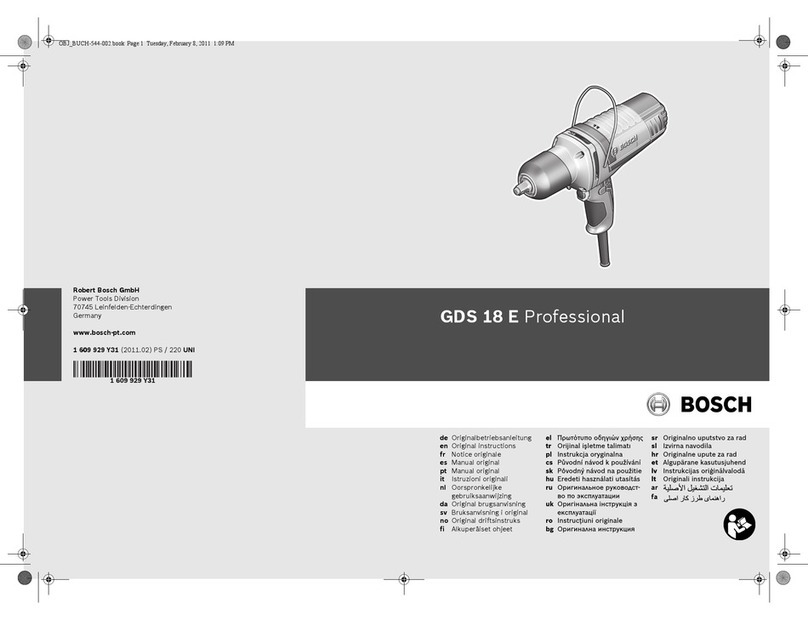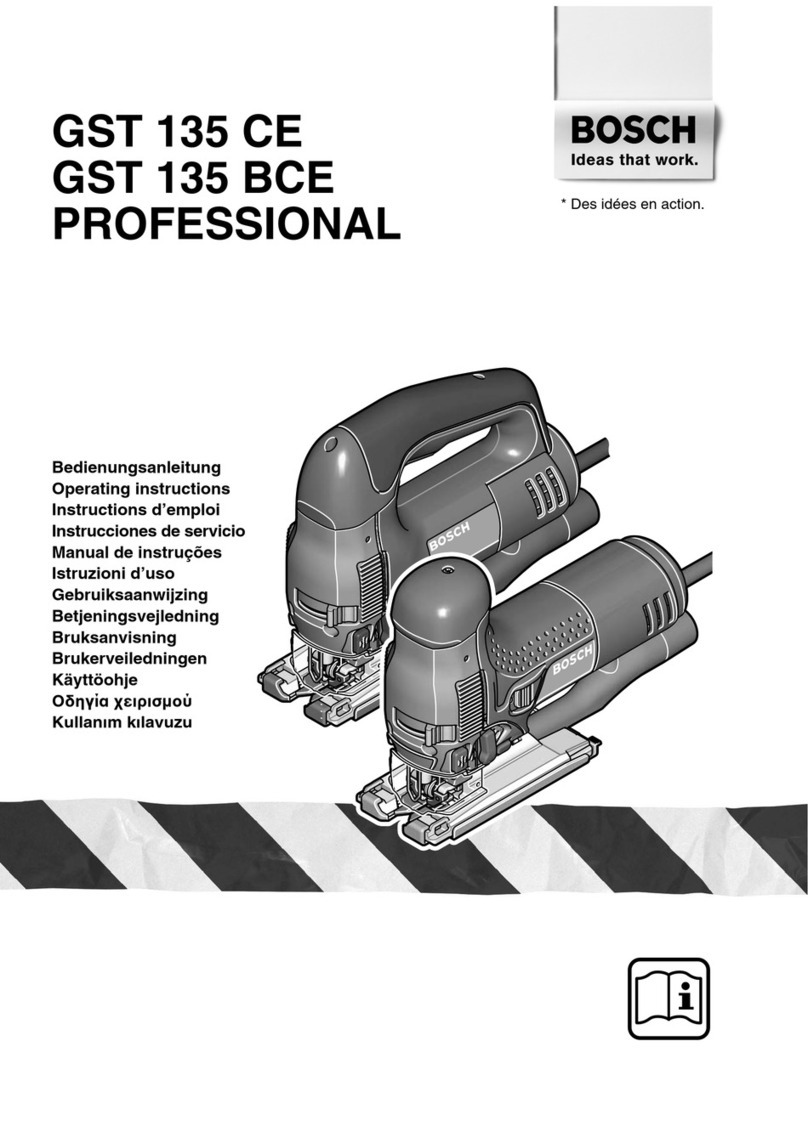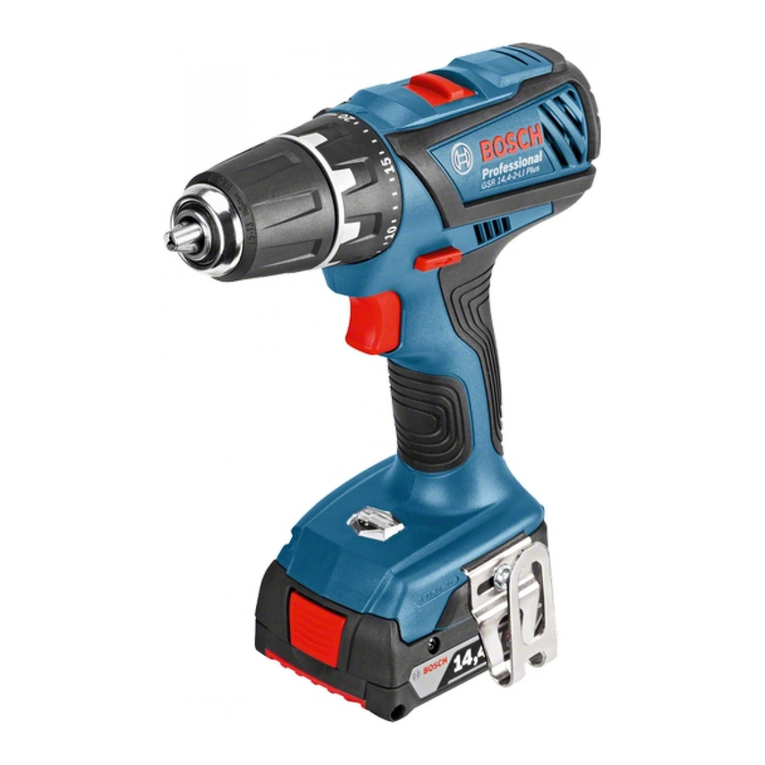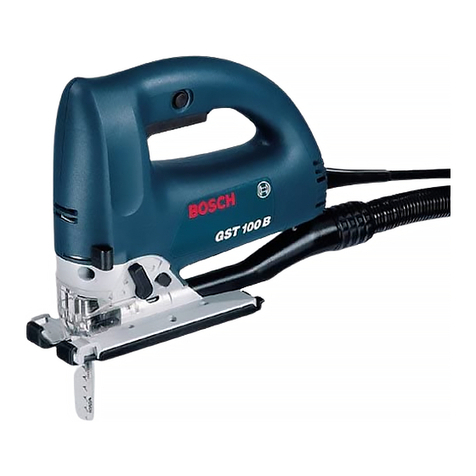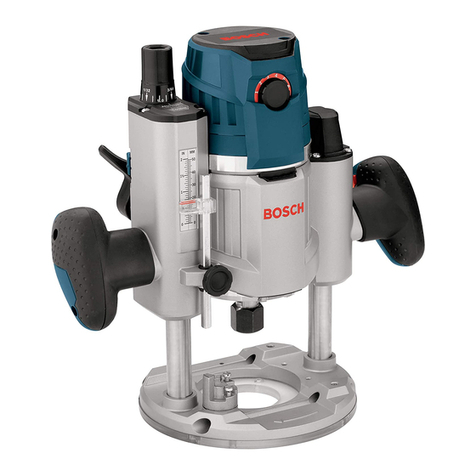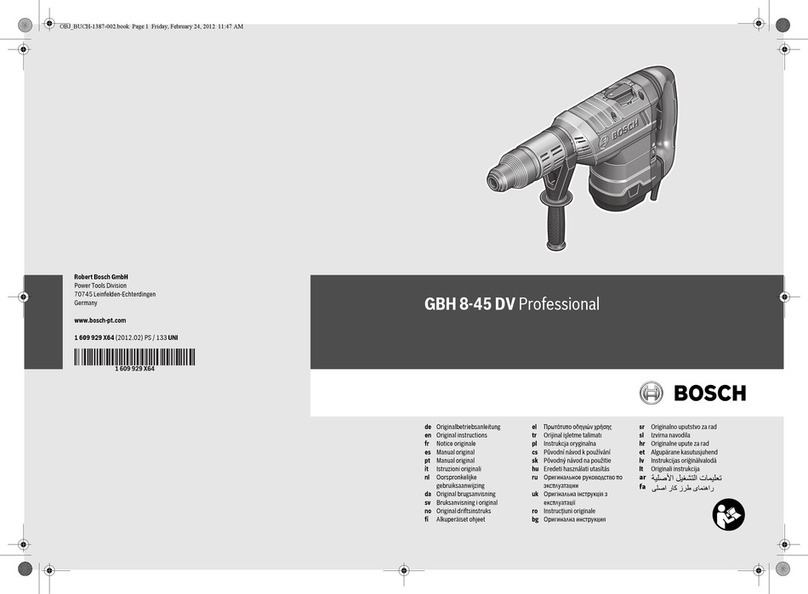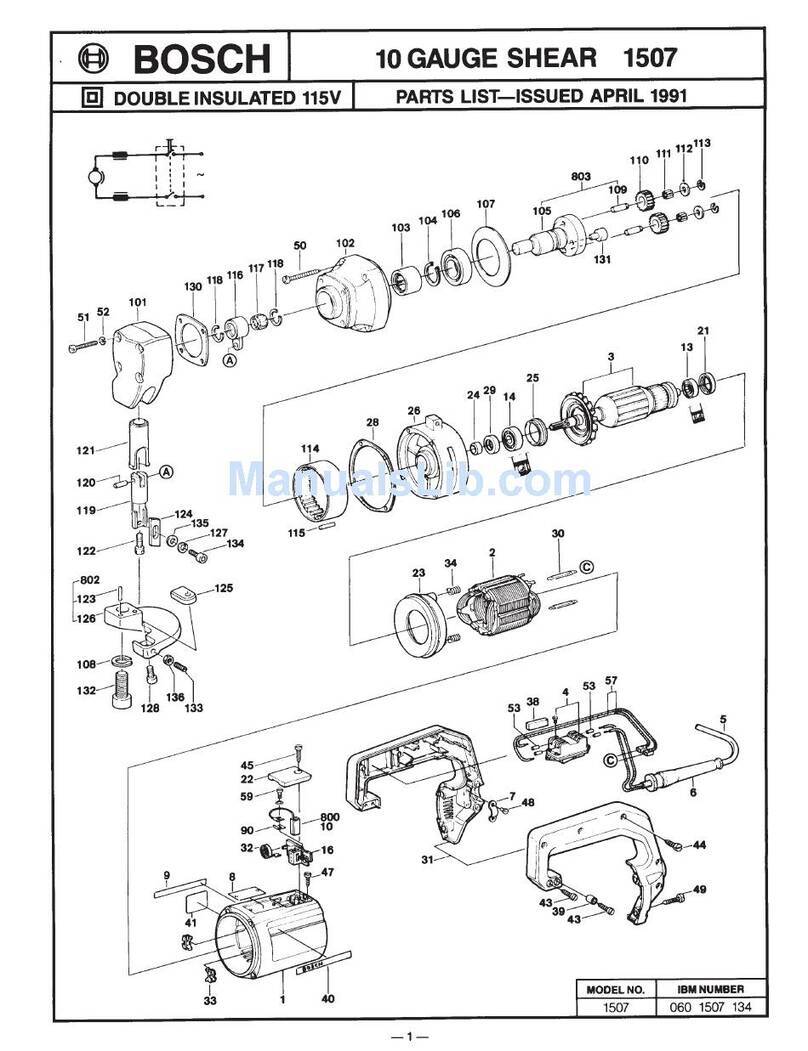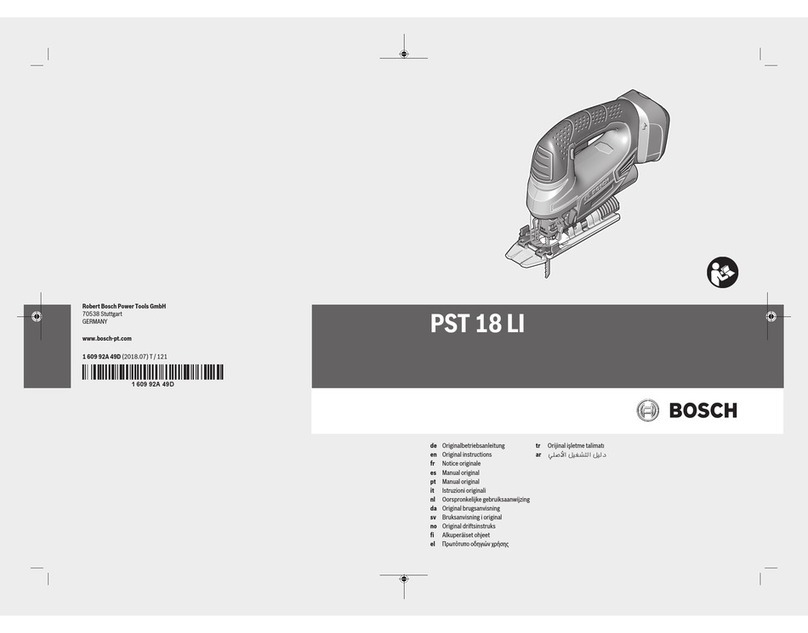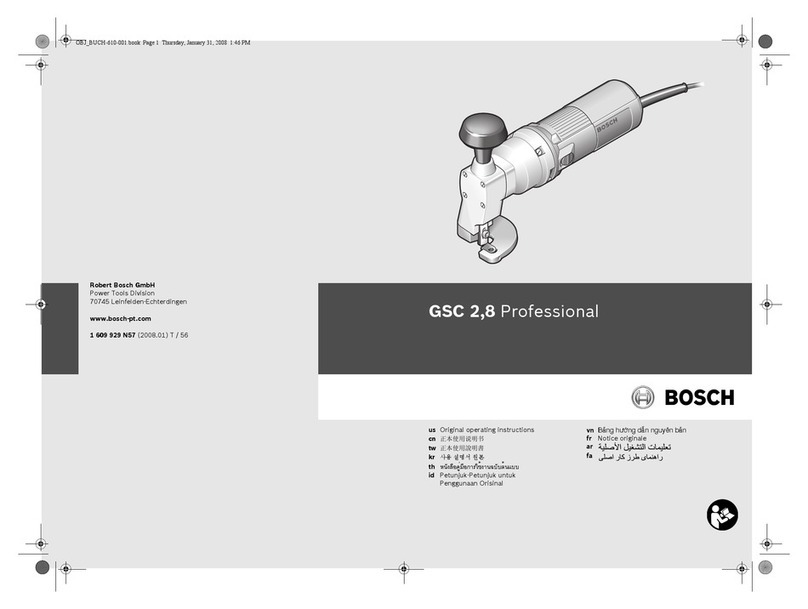
F 002 DG9 A14 2016-07-07| Bosch Limited
8 | NTI 105 | Product descriptionen
4. Commissioning
4.1 Removing the transport packaging
!Dispose the packaging material in accordance with
local regulations. Do not dispose of the packaging
material along with household waste.
4.1.1 Opening the NTI 105
1. Visually, check if there is any damage to the packag-
ing case.
iIf there are signs of damage to the packaging, report
to the transporter immediately. Report the extent of
damage to Bosch Limited immediately.
2. Move the packaging case containing the NTI 105 to
the installation site.
iDispose the packaging material in accordance with
local regulations.
3. Remove the packaging.
4. Check if all the items/accessories listed in the deliv-
ery specification are available with the NTI 105.
iIf any of the items in the scope of delivery are not
delivered, report to Bosch Limited.
4.2 Installation
Requirements for installation:
RPneumatic supply - Pressure input of 8 bar to
16 bar.
RPower supply - 230 VAC +/- 10 %, single phase,
50 Hz
!Cover the NTI 105 such that it is not exposed to rain.
!Do not apply any cleaning agents to the display
(Fig. 1, Pos. 2), keypad (Fig. 1, Pos. 5) or the status
indication LED (Fig. 1, Pos. 9).
iFor optimal operation, ensure that the compressor
pressure is constantly above 10 bar.
iAs a good practice, you can install a 40 micron filter
/ water separator in the supply line from the com-
pressor. The filter should be able to function in the
pressure range of 8 bar to 16 bar. This is to ensure
that the particulate matter and moisture is filtered
from the compressed air even before it reaches
the FRC unit of the NTI 105 which, in turn, leads to
higher longevity of the CMS tanks.
1. Clean the surface of the NTI 105 cabinet with a di-
lute solution of detergent using a soft cloth.
iTo ensure optimum performance, ensure that the
input pressure is 10 bar or above. Also ensure that
the pneumatic connections are leak-proof.
3.4.1 CMS and nitrogen tanks
Two CMS tanks (Fig. 4, Pos. 1) are used to convert air
to nitrogen. The separated nitrogen is collected in a
storage tank (Fig. 1, Pos. 1) for further distribution. The
CMS tanks are firmly fixed and bolted to the cabinet.
3.4.2 Filters for water and oil separation
The input pneumatic line is connected to the Filter Reg-
ulator Combination (FRC) (Fig. 2, Pos. 1) which acts as
an input and filtration device. Air from the compressor
at a minimum pressure of 8 bar is passed through the
FRC where the moisture and dirt are filtered. The col-
lected moisture, dirt or oil can be discharged manually
by opening the drain on the FRC. The regulator is set to
allow a maximum of 10 bar.
!Do not tamper with the regulator setting of the FRC.
3.4.3 Hose for inflation
Air or nitrogen is filled into the vehicle tire via a 8 m
filling hose. A filling nozzle fixed to the hose is used to
connect the filling hose to the vehicle tire.
3.4.4 Keypad, pressure gauge and status indication
LEDs
Selection of air / nitrogen can be done via the toggle
switch (Fig. 1, Pos. 3). The pressure can be set through
the input keys on the keypad. The pressure sensor de-
tects the tire pressure. Based on the set pressure and
mode, the tire is filled with nitrogen or air via solenoid
valves. The result of the operation is displayed on the
LCD screen. A pressure gauge is used for indicating the
pressure in the nitrogen storage tank. Upon completion
of service, the status indication LED (Fig. 1, Pos. 9)
glows.
3.4.5 Power cable and master switch
The NTI 105 is connected to 230 VAC 10%,
50 Hz 1% supply via a power cable. The NTI 105 can
be powered on by turning the master switch in the
clockwise position.


